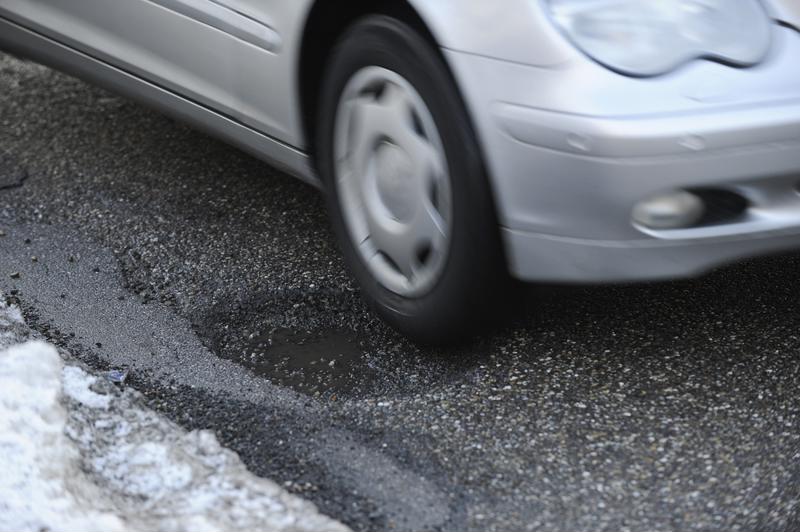Drivers on the East Coast have a lot of obstacles to overcome. Not only do they have to navigate tough winters, but they must deal with the after-effects of this season as well. In many regions, this includes driving on streets loaded with potholes.
How potholes are formed
Potholes are a common sight in the spring. That's unsurprising, as the divots are typically caused by water that seeps into the pavement, which is unavoidable in the spring as snow and ice melts. According to Hankook Tires Quarterly Gauge Index, about 37 percent of Americans stated that there were more potholes in 2014 than the year before, and 2015 is projected to be even worse.
 Potholes can cause a lot of damage to your car.
Potholes can cause a lot of damage to your car. Potholes form when water soaks into the road surface and into the ground below the cement, where it freezes again should the temperature drop. This ice expands and pushes the pavement up, leading to permanent shifts in the roadway that eventually give way to potholes. The only solution is to resurface the affected area.
Driving protocol for potholes
"How should you react to a pothole when behind the wheel?"
You can report potholes to the state or local government in the hopes that they will be repaired in a timely manner. However, it may take a while before you're back to riding smoothly on the roads, so it helps to know how to effectively avoid potholes. Despite this fact, the Quarterly Gauge Index found that only 14 percent of U.S. drivers know how to approach the pothole problem. Additionally, more than half of these motorists regularly engage in practices that could be doing more harm than good.
So how should you react to a pothole behind the wheel? To start, don't swerve. Moving your car around wildly and suddenly can lead to major collisions, especially on busy streets. Your best course of action is to slow the car as you approach the divot. Stay in your lane to increase your personal safety and simply reduce your speed, which limits the force at which your car careens into the pothole.
Drivers should also learn how to handle the side effects of running through a pothole. It's common to see damage to tires and the car's suspension, so you should be able to conduct a spot check of these aspects after you hit one of the obstacles. Professionals can handle most of the serious work, but it's up to you to monitor the vehicle's performance and note when an expert may be needed.
You have options
Have you experienced damage due to a pothole? You aren't out of options. Minor problems can be reported to the government as part of an insurance claim, but more significant damage may necessitate the purchase of a used car. If that's the case, head to NJ State Auto to browse through a wide selection of Carfax-certified vehicles. There, you'll be able to locate just the right car for you at what's sure to be a friendly price.



